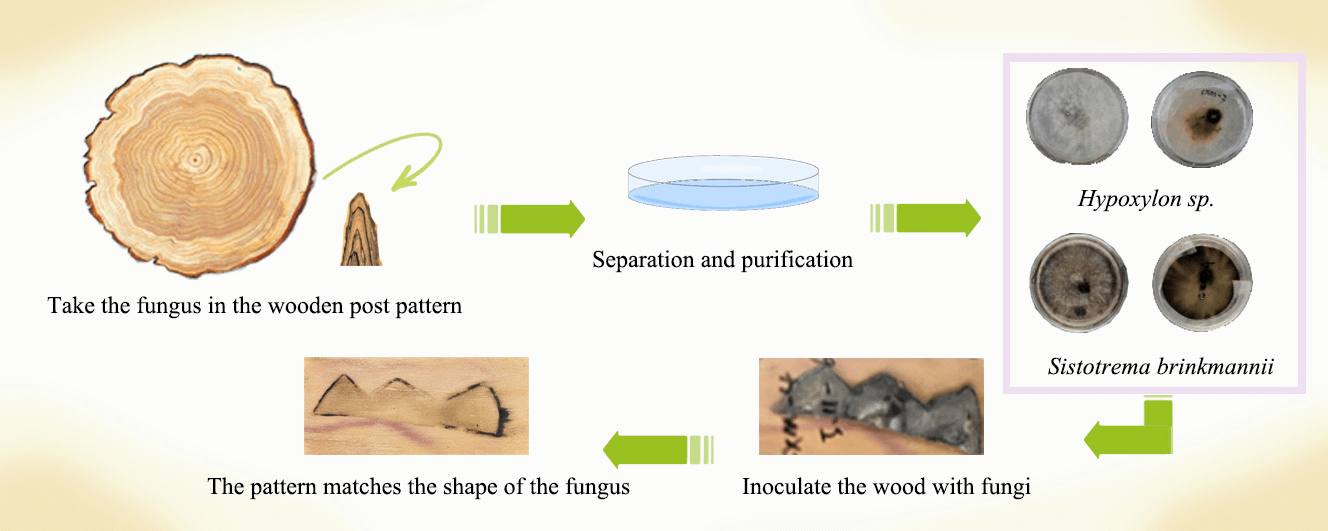 Open Access
Open Access
ARTICLE
A New Exploration of Artificially Induced Spalted Wood of Two Fungi: Hypoxylon and Sistotrema
The Key Laboratory of State Forestry Adminstration for Highly-Efficient Utilization of Forestry Biomass Resources in Southwest
China, Kunming, 650224, China
*
Corresponding Author: Lei Qin. Email: qinlei9999@163.com
Journal of Renewable Materials 2023, 11(11), 3907-3916. https://doi.org/10.32604/jrm.2023.028099
Received 29 November 2022; Accepted 10 February 2023; Issue published 31 October 2023
Abstract
One strain of Hypoxylon sp. CXM-3 and one strain of Sistotrema brinkmannii CXM-4 were inoculated onto sterilized cherry, poplar, birch, and basswood sheets in a certain shape and incubated at constant temperature and humidity for 4, 8, 12, and 16 weeks, respectively, to analyze whether the grain pattern formed by the zone lines was consistent with the predetermined pattern. The results showed that the zone lines of CXM-3 of Hypoxylon were free, delicate, and soft, with brown lines and black staining, mostly accompanied by black and brown dots, facets, and clusters, while the zone lines of CXM-4 of Sistotrema brinkmannii grew along the predetermined grain, with strong lines and a clean surface. After inoculation and incubation at a constant temperature of 25°C ± 2°C and humidity of 60%, Sistotrema brinkmannii CXM-4, on basswood veneer at 4–8 weeks and cherry veneer at 4– 16 weeks, were able to develop zone lines following a predetermined grain. Artificially induced spalted wood can only maintain a large shape, which cannot guarantee that the pattern of large-scale production of spalted wood is exactly the same and cannot be accurate to the minute details. The artificial induction can thus result in the formation of a predetermined grain pattern of the mottled wood, thus enhancing the product value and artistic value of solid wood furniture and crafts.Graphic Abstract

Keywords
Cite This Article
 Copyright © 2023 The Author(s). Published by Tech Science Press.
Copyright © 2023 The Author(s). Published by Tech Science Press.This work is licensed under a Creative Commons Attribution 4.0 International License , which permits unrestricted use, distribution, and reproduction in any medium, provided the original work is properly cited.


 Submit a Paper
Submit a Paper Propose a Special lssue
Propose a Special lssue View Full Text
View Full Text Download PDF
Download PDF Downloads
Downloads
 Citation Tools
Citation Tools